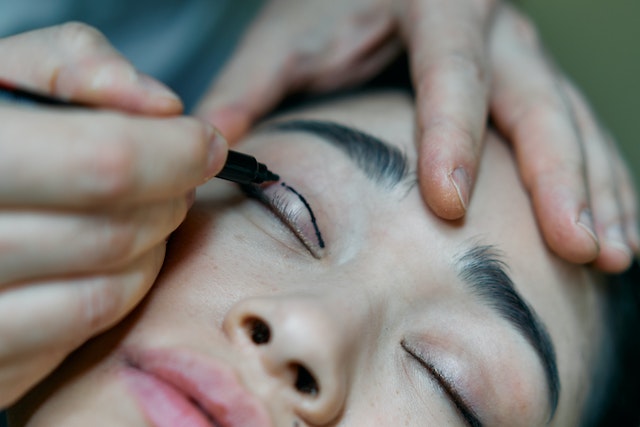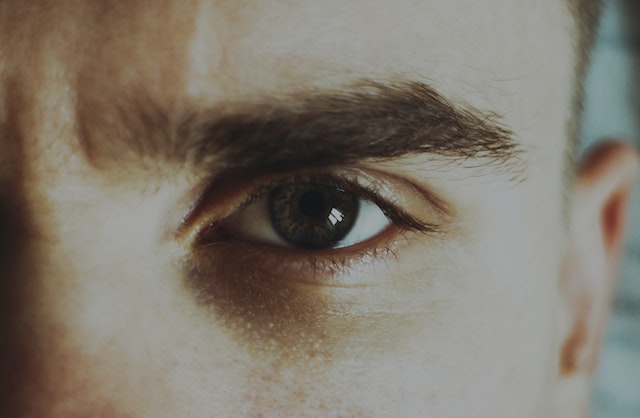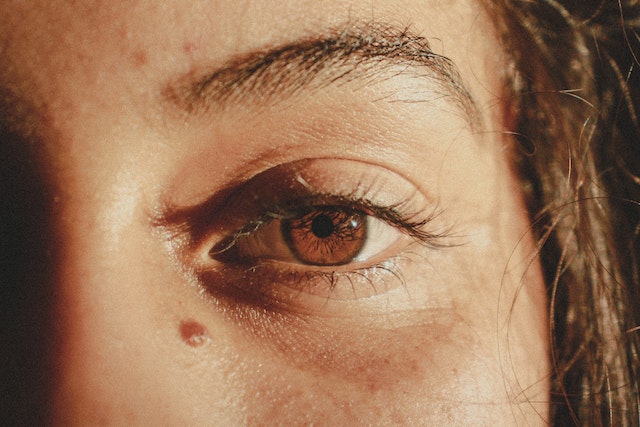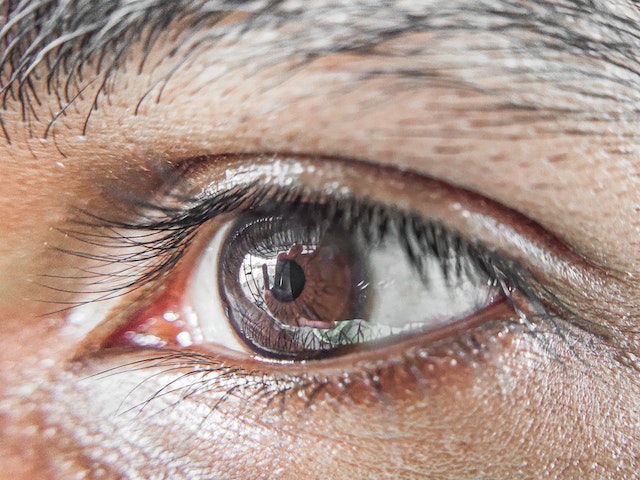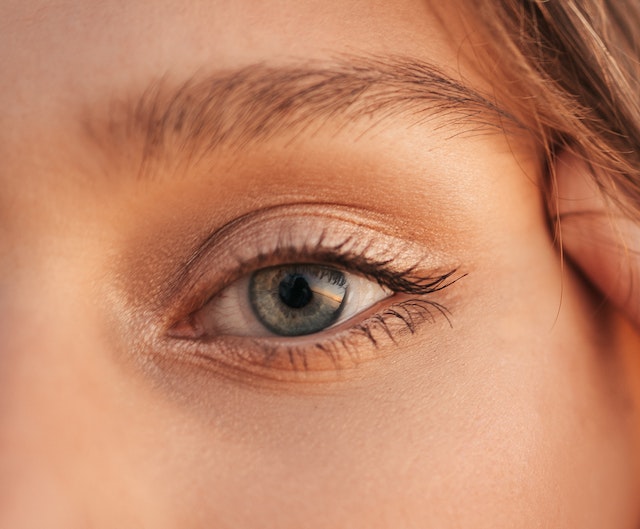Blepharoplasty, commonly known as eyelid surgery, is a cosmetic procedure that aims to enhance the appearance of the eyes by removing excess skin and fat from the eyelids. This procedure can help individuals achieve a more youthful and refreshed look, as well as improve their vision in some cases. However, one of the most common concerns among individuals considering blepharoplasty is the cost of the procedure.
The cost of blepharoplasty can vary depending on several factors, such as the surgeon’s experience, the geographic location of the practice, and the extent of the procedure. Generally, the cost of upper eyelid surgery ranges from $2,000 to $5,000, while lower eyelid surgery can cost between $2,500 and $6,000. In some cases, individuals may choose to undergo both upper and lower eyelid surgery, which can increase the overall cost of the procedure.
Despite the cost, many individuals choose to undergo blepharoplasty to achieve their desired aesthetic outcomes and improve their self-confidence. However, it is important to note that the cost of the procedure should not be the only factor considered when deciding whether or not to undergo blepharoplasty. In the following sections, we will explore the various aspects of blepharoplasty, including the procedure itself, anesthesia options, candidacy, risks and complications, recovery, and more.
Key Takeaways
- Blepharoplasty is a cosmetic procedure that removes excess skin and fat from the eyelids to enhance the appearance of the eyes and improve vision in some cases.
- The cost of blepharoplasty can vary depending on several factors, including the surgeon’s experience, geographic location, and extent of the procedure.
- While cost is a significant consideration, individuals should also consider other aspects of blepharoplasty, such as candidacy, risks and complications, and recovery, before deciding to undergo the procedure.
Understanding Blepharoplasty
Blepharoplasty, also known as eyelid surgery, is a cosmetic surgical procedure that aims to improve the appearance of the upper and/or lower eyelids. It is a popular cosmetic surgery procedure that can help individuals achieve a more youthful, refreshed look.
Blepharoplasty is performed by an oculoplastic surgeon or a plastic surgeon who has specialized training in eyelid surgery. The procedure involves removing excess skin, fat, and muscle from the eyelids, which can cause drooping, puffiness, and wrinkles.
The cost of blepharoplasty can vary depending on several factors, including the surgeon’s experience, the location of the practice, and the extent of the surgery. On average, the cost of blepharoplasty in the United States ranges from $2,000 to $7,000.
It is important to note that blepharoplasty is considered a cosmetic surgery procedure and is not typically covered by insurance. However, in some cases, if the procedure is deemed medically necessary due to vision impairment, insurance may cover a portion of the cost.
Overall, blepharoplasty can be a highly effective way to improve the appearance of the eyelids and achieve a more youthful, refreshed look. Individuals considering this procedure should consult with a qualified oculoplastic surgeon or plastic surgeon to discuss their options and determine if blepharoplasty is right for them.
The Procedure of Blepharoplasty
Blepharoplasty is a surgical procedure that aims to improve the appearance of the eyelids by removing excess skin, muscle, and fat. The procedure can be performed on the upper eyelids, lower eyelids, or both.
During the surgery, the surgeon will make incisions in the natural creases of the eyelids to minimize visible scarring. For upper blepharoplasty, the incision is made in the crease of the upper eyelid, while for lower blepharoplasty, the incision is made below the lash line or inside the lower eyelid.
After making the incisions, the surgeon will remove excess skin, muscle, and fat as needed. The muscles in the eyelids may also be tightened to improve the overall appearance. If the patient has ptosis (drooping eyelids), the surgeon may perform ptosis surgery in conjunction with blepharoplasty.
In some cases, the surgeon may use a laser to perform the procedure. Laser blepharoplasty is a less invasive alternative to traditional surgery and can result in less bleeding, swelling, and scarring.
The procedure typically takes 1-3 hours to complete, depending on the extent of the surgery. Patients will be given local anesthesia or general anesthesia, depending on their preference and the surgeon’s recommendation.
Overall, blepharoplasty is a safe and effective procedure that can improve the appearance of the eyelids and help patients feel more confident in their appearance.
Anesthesia in Blepharoplasty
Anesthesia is a crucial component of blepharoplasty, a surgical procedure that involves the removal of excess skin, fat, and muscle from the eyelids. The goal of anesthesia is to ensure that the patient is comfortable and pain-free during the procedure. Depending on the extent of the surgery and the patient’s medical history, the surgeon may recommend either general or local anesthesia.
General Anesthesia
General anesthesia is a type of anesthesia that puts the patient to sleep during the surgery. It is typically recommended for more extensive surgeries or for patients who are particularly anxious or uncomfortable with the idea of being awake during the procedure. During general anesthesia, the patient is closely monitored by an anesthesiologist, who administers the anesthesia and monitors the patient’s vital signs throughout the surgery.
Local Anesthesia
Local anesthesia is a type of anesthesia that numbs only the area being operated on. It is typically recommended for less extensive surgeries or for patients who prefer to remain awake during the procedure. During local anesthesia, the surgeon will inject a numbing medication into the eyelids, which will take effect within a few minutes. The patient will remain awake throughout the procedure, but will not feel any pain or discomfort.
Anesthesia Fees
Anesthesia fees are an additional cost that patients should be aware of when considering blepharoplasty. The cost of anesthesia will depend on the type of anesthesia used, the length of the surgery, and the experience of the anesthesiologist. Patients should discuss anesthesia fees with their surgeon prior to the surgery to ensure that they are fully informed of all costs associated with the procedure.
In summary, anesthesia is an important component of blepharoplasty that ensures patient comfort and safety during the surgery. Patients should discuss the type of anesthesia to be used and any associated fees with their surgeon prior to the surgery to ensure that they are fully informed and prepared for the procedure.
Who is a Candidate for Blepharoplasty
Blepharoplasty, also known as eyelid surgery, is a cosmetic procedure that aims to improve the appearance of the eyelids by removing excess skin, fat, and muscle. This procedure can be performed on both the upper and lower eyelids, and it is suitable for individuals who are bothered by sagging or drooping eyelids, puffiness, baggy skin, or wrinkles around the eyes.
Age is not a determining factor for candidacy, but most candidates are typically over the age of 35. However, younger individuals may also be suitable for the procedure if they have inherited droopy eyelids or puffiness due to genetics.
One of the primary reasons individuals seek out blepharoplasty is due to vision problems caused by sagging or drooping eyelids. In severe cases, sagging eyelids can obstruct peripheral vision, making it difficult to perform daily activities such as driving or reading. In these cases, blepharoplasty may be considered a medical necessity, and insurance may cover the cost of the procedure.
Puffiness and baggy skin around the eyes can also be a concern for some individuals. This can be caused by aging, genetics, or lifestyle factors such as lack of sleep or poor diet. While these issues may not necessarily affect vision, they can make individuals appear tired or older than they actually are. In these cases, blepharoplasty can help to create a more refreshed and youthful appearance.
Finally, wrinkles around the eyes, commonly referred to as crow’s feet, can also be improved with blepharoplasty. While this procedure is not a substitute for other anti-aging treatments such as Botox, it can help to smooth out the skin around the eyes and create a more youthful appearance.
Overall, the best way to determine if you are a candidate for blepharoplasty is to consult with a qualified plastic surgeon. They can evaluate your individual concerns and goals, and recommend the most appropriate treatment plan for you.
Cost of Blepharoplasty
Blepharoplasty, commonly known as eyelid surgery, is a cosmetic procedure that helps to improve the appearance of the eyelids by removing excess skin, fat, and muscle. The cost of blepharoplasty varies depending on several factors such as the surgeon’s fee, operating room facilities, and insurance coverage.
The surgeon’s fee is a significant factor in the cost of blepharoplasty. The fee varies depending on the surgeon’s experience, reputation, and location. On average, the surgeon’s fee for blepharoplasty ranges from $2,000 to $5,000.
Operating room facilities are another factor that affects the cost of blepharoplasty. The cost of the operating room facilities includes the use of the operating room, anesthesia, and nursing staff. The cost of operating room facilities for blepharoplasty ranges from $800 to $1,500.
Insurance coverage for blepharoplasty is often limited to cases where the procedure is deemed medically necessary. In such cases, insurance may cover a portion of the cost of the procedure. However, if the procedure is performed for cosmetic reasons, insurance will not cover the cost of the procedure.
The cost of blepharoplasty also varies depending on the type of procedure performed. Upper eyelid surgery is generally less expensive than lower eyelid surgery. The cost of upper eyelid surgery ranges from $2,500 to $3,500, while the cost of lower eyelid surgery ranges from $3,000 to $4,500.
In conclusion, the cost of blepharoplasty varies depending on several factors such as the surgeon’s fee, operating room facilities, and insurance coverage. It is important to consult with a qualified surgeon to determine the cost of the procedure and the available payment options.
Consultation for Blepharoplasty
Before undergoing blepharoplasty, it is important to schedule a consultation with a board-certified plastic surgeon. During the consultation, the surgeon will evaluate the patient’s goals, medical history, and overall health to determine if they are a good candidate for the procedure.
The surgeon will typically ask the patient about their reasons for wanting blepharoplasty and what they hope to achieve from the procedure. This will help the surgeon understand the patient’s goals and expectations and ensure that they are realistic.
The surgeon will also ask about the patient’s medical history, including any past surgeries, medical conditions, and medications they are currently taking. This information is important to ensure that the patient is healthy enough to undergo the procedure and to avoid any potential complications.
Smoking and diabetes can also affect the healing process after surgery, so the surgeon will ask about these factors as well. It is important for patients to be honest about their smoking habits and any medical conditions they have so that the surgeon can make an informed decision about whether or not they are a good candidate for blepharoplasty.
Overall, the consultation is an important step in the blepharoplasty process. It allows the surgeon to evaluate the patient’s goals and health and determine if they are a good candidate for the procedure. Patients should be prepared to ask questions and communicate openly with their surgeon to ensure that they have a clear understanding of the procedure and what to expect.
Risks and Complications
As with any surgical procedure, blepharoplasty carries some risks and potential complications. However, these risks are generally low and can be minimized by choosing a qualified and experienced surgeon.
Risks
The following risks are associated with blepharoplasty:
- Pain: Patients may experience some pain and discomfort after the procedure, but this can be managed with medication.
- Infection: Although rare, infection can occur after surgery. Patients can reduce their risk of infection by following their surgeon’s post-operative instructions and keeping the surgical site clean.
- Bleeding: Bleeding is also rare, but patients may experience some minor bleeding during or after the procedure.
- Swelling and bruising: Swelling and bruising are common after blepharoplasty and can last for several weeks.
- Discomfort: Patients may experience some discomfort, such as dry eyes or sensitivity to light, after the procedure. These symptoms usually resolve within a few weeks.
- Scars: Blepharoplasty incisions are typically well-hidden, but some scarring may occur. However, scars usually fade over time and are not noticeable.
Complications
Although rare, the following complications can occur after blepharoplasty:
- Discoloration: Patients may experience some discoloration around the surgical site, but this usually resolves within a few weeks.
- Blurred vision: In rare cases, patients may experience blurred vision after the procedure. This is usually temporary and resolves within a few days or weeks.
- Double vision: Double vision is also rare, but can occur if the muscles that control eye movement are affected during the procedure.
- Blood clots: Blood clots are a rare but serious complication that can occur after any surgery. Patients can reduce their risk of blood clots by staying active and following their surgeon’s post-operative instructions.
- Follow-up surgery: In some cases, patients may require follow-up surgery to address complications or achieve their desired results.
Recovery from Blepharoplasty
After a blepharoplasty procedure, the patient can expect to spend some time recovering. The length of recovery time can vary, but most patients can return to work and normal activities within one to two weeks.
During the initial healing process, it is important to keep the eyes clean and avoid any strenuous activities. Ice packs can be used to reduce swelling and bruising, and eye drops may be prescribed to help with irritation and dryness.
It is recommended that patients wear glasses instead of contact lenses during the first week of recovery to avoid any unnecessary irritation to the eyes. Sunglasses can also be worn to protect the eyes from the sun and wind.
Recovery supplies such as gauze pads and ointment may be provided by the surgeon to help with the healing process. It is important to follow all post-operative instructions provided by the surgeon to ensure proper healing.
Some patients may experience temporary side effects such as watering eyes and sensitivity to light, but these should subside within a few days to a week. If any concerns arise during the recovery process, it is important to contact the surgeon for guidance.
Overall, proper care and attention during the recovery process can help ensure a successful blepharoplasty procedure.
Aesthetic Outcomes of Blepharoplasty
Blepharoplasty, also known as eyelid surgery, is a cosmetic procedure that can help improve the appearance of the eyelids. Sagging skin, muscles, and excess fat can create a tired or aged appearance in the eye area. Blepharoplasty can help correct these issues, resulting in a more youthful appearance.
During the procedure, incisions are made in the natural creases of the eyelids to minimize scarring. The surgeon may remove excess skin, muscle, and fat to create a more defined and lifted look. In some cases, a brow lift may also be recommended to further enhance the results.
The aesthetic outcomes of blepharoplasty can be significant. Patients often report feeling more confident and satisfied with their appearance after the procedure. The results can last for many years, making it a worthwhile investment for those seeking to improve their appearance.
It is important to note that blepharoplasty is an elective cosmetic surgery, meaning it is not medically necessary. As such, the cost of the procedure is not typically covered by insurance. The cost can vary depending on several factors, including the surgeon’s experience and the location of the practice.
Overall, blepharoplasty can be an effective way to address cosmetic concerns in the eye area. Patients should consult with a qualified surgeon to determine if the procedure is right for them and to discuss the potential risks and benefits.
Additional Information
When considering the cost of blepharoplasty, there are additional factors to keep in mind. The following information can help patients make informed decisions about the procedure.
American Society of Plastic Surgeons
The American Society of Plastic Surgeons (ASPS) is a professional organization that provides information and resources to both patients and surgeons. Patients can use the ASPS website to find board-certified plastic surgeons in their area, as well as to learn more about specific procedures like blepharoplasty.
Medications and Supplements
Before and after blepharoplasty, patients should be aware of any medications or supplements that may affect the procedure or recovery. For example, blood thinners like aspirin and ibuprofen can increase the risk of bleeding during surgery. Patients should discuss all medications and supplements with their surgeon before the procedure.
Outpatient Procedure
Blepharoplasty is typically an outpatient procedure, meaning that patients can go home the same day as the surgery. However, patients should arrange for someone to drive them home after the procedure and should plan to rest for several days after the surgery.
Location
The cost of blepharoplasty can vary depending on the location of the surgery. In general, blepharoplasty is more expensive in larger cities and on the coasts. Patients should research the cost of the procedure in their area and consider traveling to a different location if the cost is significantly lower.
Overall, patients should be confident and knowledgeable when considering the cost of blepharoplasty. By researching the procedure and discussing all options with their surgeon, patients can make informed decisions about their surgery.
Frequently Asked Questions
What factors affect the cost of blepharoplasty surgery?
The cost of blepharoplasty surgery can vary depending on several factors. Some of the factors that can affect the cost of blepharoplasty surgery include the surgeon’s experience, the location of the practice, the complexity of the procedure, and the type of anesthesia used. Additionally, the cost of blepharoplasty surgery can vary depending on whether the patient is having upper or lower eyelid surgery, or both.
Is blepharoplasty covered by insurance?
In most cases, blepharoplasty surgery is considered a cosmetic procedure and is not covered by insurance. However, if the surgery is being performed to correct a medical condition, such as ptosis (drooping eyelids) or vision problems caused by excess skin on the eyelids, insurance may cover the cost of the procedure. Patients should check with their insurance provider to determine their coverage.
How much does lower blepharoplasty cost?
The cost of lower blepharoplasty surgery can vary depending on several factors, including the surgeon’s experience, the location of the practice, and the complexity of the procedure. On average, lower blepharoplasty can cost anywhere from $2,000 to $5,000.
What is the average cost of upper and lower blepharoplasty?
The average cost of upper and lower blepharoplasty surgery can vary depending on several factors, including the surgeon’s experience, the location of the practice, and the complexity of the procedure. On average, the cost of upper and lower blepharoplasty surgery can range from $4,000 to $10,000.
What is the recovery time for blepharoplasty surgery?
The recovery time for blepharoplasty surgery can vary depending on several factors, including the extent of the procedure and the patient’s overall health. In general, patients can expect to experience some bruising, swelling, and discomfort for the first few days after surgery. Most patients are able to return to work and other normal activities within 7 to 10 days after surgery.
What are the risks and complications associated with blepharoplasty?
As with any surgical procedure, there are risks and complications associated with blepharoplasty surgery. Some of the potential risks and complications include bleeding, infection, scarring, and changes in vision. Patients should discuss the risks and benefits of the procedure with their surgeon before deciding to undergo blepharoplasty surgery.

